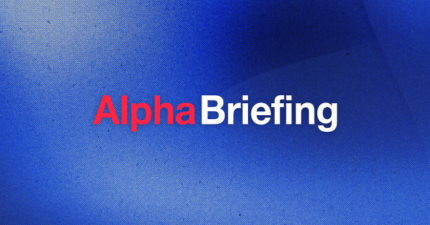The Top U.S.-Based Crypto Coins To Watch in 2025

With President Trump’s positive outlook on Bitcoin and other cryptocurrencies, the U.S. crypto industry may be on the brink of a revolution.
The Trump administration has introduced various initiatives to provide legislative and regulatory clarity for the crypto industry — such as the Securities Exchange Commission’s (SEC) Crypto Task Force and a crypto-focused Working Group — which could potentially result in wider crypto adoption.
This, coupled with Eric Trump’s announcement that U.S.-based crypto projects will be exempt from capital gains tax, may encourage more innovation in the crypto sector and position the U.S. as one of the most crypto-friendly countries.
As these and other initiatives come into effect, these nine crypto coins should be on your radar.
1. XRP (Ripple)
XRP is the native token of the XRP Ledger, launched in 2012 by Jed McCaleb, Arthur Britto, and David Schwartz. The coin stands out from many cryptocurrencies because it was pre-mined and has a maximum supply of 100 billion.
It’s designed for fast, low-cost international payments and remittances and is primarily used by Ripple, a blockchain solutions company, as a settlement layer in its commercial platform.
The coin is more cost-effective and energy-efficient than BTC and has, therefore, become one of the most popular options in the crypto market, with a market cap of over $148 billion.
2. Solana (SOL)
Solana is also a top contender in the U.S., with a market cap of over $81 billion. Started in 2020 by Solana Labs, the crypto coin has grown tremendously over the past few years and has become one of Ethereum’s top competitors.
Solana is a top choice for decentralized applications (dApps) and non-fungible tokens (NFTs), thanks to its speed and cost-efficiency.
3. USD Coin (USDC)
The USD Coin isn’t your typical crypto asset. It’s a stablecoin on the Ethereum blockchain whose value is pegged to the U.S. dollar.
The crypto coin was introduced by Center Consortium in 2018 and currently has a market cap of over $56 billion. It’s popular because it provides stability in the volatile crypto market and serves as a reliable digital asset for transactions.
4. Avalanche (AVAX)
Started in 2020 by Emin Gün Sirer and the Ava Labs team, Avalanche is a decentralized platform that allows developers to launch DeFi platforms and NFTs. The blockchain platform is popular for enterprise deployments that value its speed, scalability, and flexibility.
Its native token, AVAX, has a market capitalization of over $9.8 billion, positioning it as a top option in the U.S.
5. Sui (SUI)
Sui is relatively new in the crypto market, but it’s performing quite well. The blockchain platform was started by Mysten Labs in 2023 and has great market potential despite being an emerging player — its market cap is currently over $9 billion.
The network leverages the Move programming language, which allows it to facilitate fast transactions while keeping costs low. Its developers claim it can process roughly 300,000 transactions per second.
6. Stellar (XLM)
Stellar is a top choice for global financial systems. The decentralized protocol was developed in 2014 by the Stellar Development Foundation (SDF) to enable quick crypto-to-fiat transactions and seamless cross-border payments.
Stellar’s cryptocurrency, XLM, has a market cap of nearly $10 billion, highlighting its popularity. It primarily serves as an on-chain transaction facilitator but can also be purchased on some crypto exchanges as an investment.
7. Hedera (HBAR)
Hedera is a distributed ledger technology initiated by Hedera Hashgraph LLC in 2018. The decentralized network has a governing council, which includes large players like Google, IBM, Boeing, and University College London.
Unlike many networks, it relies on Hashgraph technology rather than blockchains, meaning there’s no mining involved. This makes it a top choice for environmentally conscious individuals and enterprises.
Its utility token, HBAR, has a market cap of over $8 billion, underscoring its popularity not only as a solution for paying transaction fees on the Hedera network but also as an investment option.
8. Litecoin (LTC)
Launched just two years after Bitcoin (in 2011), Litecoin is commonly referred to as the “silver to Bitcoin’s gold.” It was developed by Charlie Lee, an MIT graduate, using Bitcoin’s open-source code and, like BTC, has a coin limit of 84 million.
Despite numerous other crypto coins entering the market since 2011, the peer-to-peer altcoin continues to maintain its relevance in the crypto ecosystem, with a current market cap of over $9 billion.
Litecoin facilitates instant, low-cost, cross-border transactions, making it a top contender for individuals and businesses that prioritize speed and cost savings.
9. NEAR Protocol (NEAR)
NEAR Protocol is a Layer 1 blockchain platform designed to help developers create dApps and Web3 technologies. It was started in 2020 by Erik Trautman, Alex Skidanov, and Illia Polosukhin to help make blockchain interactions as intuitive as possible.
The decentralized protocol focuses on ease of use and scalability, making it a top choice for developers. This is evident from its market cap of over $3.5 billion. Its native cryptocurrency, the NEAR coin, is popular as well because it facilitates staking on the network.
How Are U.S.-Based Crypto Coins Regulated?
U.S.-based crypto coins are regulated at both the federal and state levels. Here’s an overview of how that works in practice.
Federal and State Regulation
Crypto coins are regulated by various agencies at the federal level, including:
- Securities and Exchange Commission (SEC): Regulates crypto coins classified as securities. It has sued various crypto companies and exchanges, including Ripple, alleging that it broke securities laws when it sold XRP to investors.
- Commodity Futures Trading Commission (CFTC): Oversees commodity derivatives markets and, as such, regulates coins with futures, swaps, and options.
- Financial Crimes Enforcement Network (FinCEN): Implements anti-money laundering (AML) and countering the financing of terrorism (CFT) policies across all U.S.-based crypto assets.
- Internal Revenue Service (IRS): Enforces tax laws related to crypto coins. The agency treats cryptocurrencies as property and requires individuals and businesses to pay taxes on crypto coins that qualify as ordinary income or business income. It also imposes taxes on profits made from the sale of crypto coins.
Beyond adhering to federal regulations, crypto coin issuers and exchanges must comply with state laws in their areas of operation. For example, New York requires them to acquire a BitLicense, a special type of license purposely intended for virtual currency businesses. They also need licenses in the District of Columbia, Delaware, Colorado, and Alaska.
Many states have yet to develop clear regulatory guidelines for crypto coins, but they’re in the process of doing so. The federal regulatory landscape is also evolving as lawmakers and regulatory bodies continue to adapt to the rapidly changing digital asset landscape. Therefore, it’s important to keep up with regulatory changes at both levels.
Ongoing Developments
The U.S. crypto industry is expected to undergo significant changes in the coming years due to the following developments:
- Trump‘s executive order: The “Strengthening American Leadership in Digital Financial Technology” Order has already made significant changes:
- Revoking the development and issuance of a U.S. central bank digital currency (CBDC)
- Promoting open and fair access to financial services for crypto businesses
- Encouraging the development of dollar-backed stablecoins
It has also established a Working Group to help bring regulatory clarity to the crypto landscape and explore the viability of a national digital asset stockpile.
- Efforts pushing for strategic Bitcoin reserves: The BITCOIN Act of 2024 seeks to establish a Bitcoin reserve comprising over one million Bitcoins at the federal level. Other states, like Pennsylvania, Wyoming, Texas, and Ohio, have also proposed similar bills. If passed, they could encourage wider cryptocurrency adoption and innovation across the U.S., resulting in more crypto coins.
- SEC’s Crypto Task Force: Led by Commissioner Hester Peirce, this task force is expected to develop clear crypto regulations. Eliminating ambiguity in the digital asset sector could encourage wider crypto adoption by both retail and institutional investors and potentially promote the development of more coins.
Accelerate Your Crypto Journey With AlphaPoint
The U.S. crypto industry is continuously growing as more crypto coins enter the market. Thanks to the new administration’s focus on developing clear regulations and creating an environment that fosters innovation, we’ll likely see the development of more coins in the coming years.
This could mean additional income streams for financial institutions and other crypto businesses, such as exchanges. Don’t let this opportunity pass you by.
With AlphaPoint, you can launch your crypto platform in just weeks. We offer white-label infrastructure complete with essential features like security, liquidity, and compliance, allowing you to go to market quickly. We also provide expert advisory services, helping you navigate the crypto landscape seamlessly.
Schedule a demo to learn how we can help you start and grow your crypto platform!


